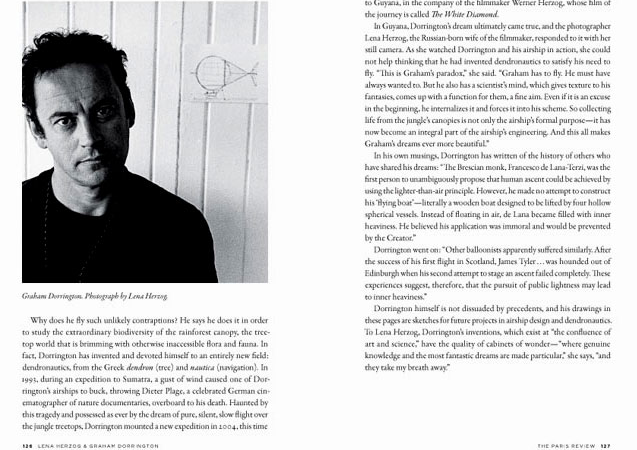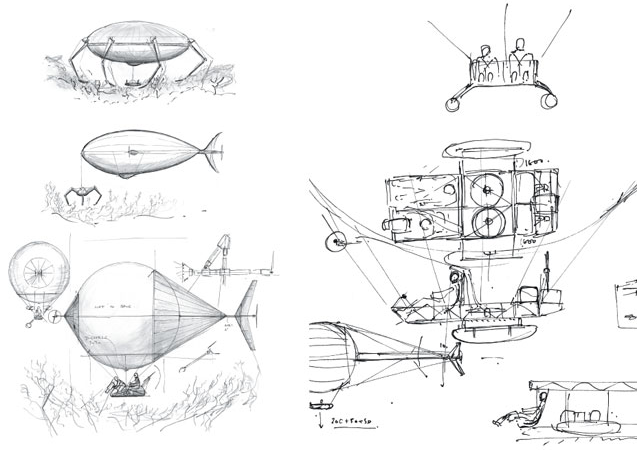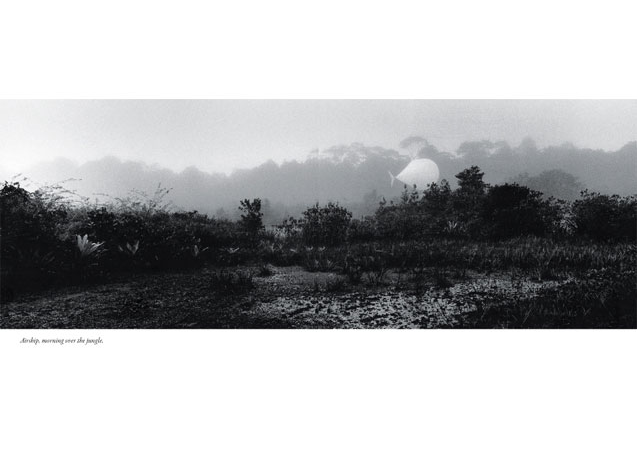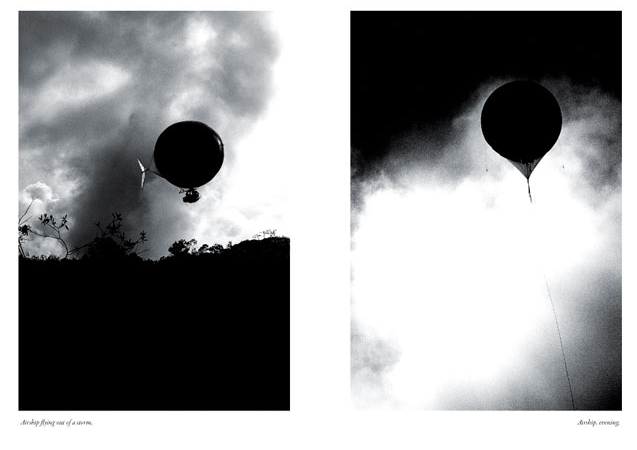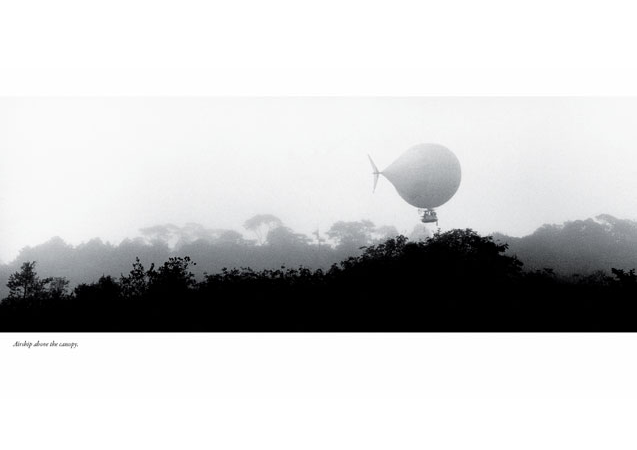Graham Dorrington is an Englishman who maintains a collec¬tion of antique farm tools, assembled by his late father. It contains some eight hundred pieces: sheep shears and dyke shovels, a horse-grooming scraper and a muck rake, a variety of manure knives, a bull nose ring, an assortment of turnip choppers, all manner of breastplows, and something called a wooden dibber. The tools are made of wood and iron; they are meant for working the ground; many of them depend, for their function, on com¬pliance with the downward drag of gravity; and their design has an earthbound, utilitarian simplicity. In all these ways, the tools reflect qualities that are exactly the opposite of Dorrington’s great passion and vocation, which is flying.
Dorrington is an aeronaut. At Queen Mary, University of London, he is a lecturer in aerospace design, and among his recent publications are articles titled “Rationale for Supersonic After-Burning Rocket Engines” and “Drag of a Spheroid-Cone Shaped Airship.” But what really keeps him busy is designing, building, and flying dirigibles—lighter-than-air vehicles—or as he prefers to call them, airships.
Why does he fly such unlikely contraptions? He says he does it in order to study the extraordinary biodiversity of the rainforest canopy, the tree¬top world that is brimming with otherwise inaccessible flora and fauna. In fact, Dorrington has invented and devoted himself to an entirely new field: dendronautics, from the Greek dendron (tree) and nautica (navigation). In 1993, during an expedition to Sumatra, a gust of wind caused one of Dor¬rington’s airships to buck, throwing Dieter Plage, a celebrated German cin¬ematographer of nature documentaries, overboard to his death. Haunted by this tragedy and possessed as ever by the dream of pure, silent, slow flight over the jungle treetops, Dorrington mounted a new expedition in 2004, this time to Guyana, in the company of the filmmaker Werner Herzog, whose film of the journey is called The White Diamond.
In Guyana, Dorrington’s dream ultimately came true, and the photographer Lena Herzog, the Russian-born wife of the filmmaker, responded to it with her still camera. As she watched Dorrington and his airship in action, she could not help thinking that he had invented dendronautics to satisfy his need to fly. “This is Graham’s paradox,” she said. “Graham has to fly. He must have always wanted to. But he also has a scientist’s mind, which gives texture to his fantasies, comes up with a function for them, a fine aim. Even if it is an excuse in the beginning, he internalizes it and forces it into his scheme. So collecting life from the jungle’s canopies is not only the airship’s formal purpose—it has now become an integral part of the airship’s engineering. And this all makes Graham’s dreams ever more beautiful.”
In his own musings, Dorrington has written of the history of others who have shared his dreams: “The Brescian monk, Francesco de Lana-Terzi, was the first person to unambiguously propose that human ascent could be achieved by using the lighter-than-air principle. However, he made no attempt to construct his ‘flying boat’—literally a wooden boat designed to be lifted by four hollow spherical vessels. Instead of floating in air, de Lana became filled with inner heaviness. He believed his application was immoral and would be prevented by the Creator.”
Dorrington went on: “Other balloonists apparently suffered similarly. After the success of his first flight in Scotland, James Tyler . . . was hounded out of Edinburgh when his second attempt to stage an ascent failed completely. These experiences suggest, therefore, that the pursuit of public lightness may lead to inner heaviness.”
Dorrington himself is not dissuaded by precedents, and his drawings in these pages are sketches for future projects in airship design and dendronautics. To Lena Herzog, Dorrington’s inventions, which exist at “the confluence of art and science,” have the quality of cabinets of wonder—“where genuine knowledge and the most fantastic dreams are made particular,” she says, “and they take my breath away.”

